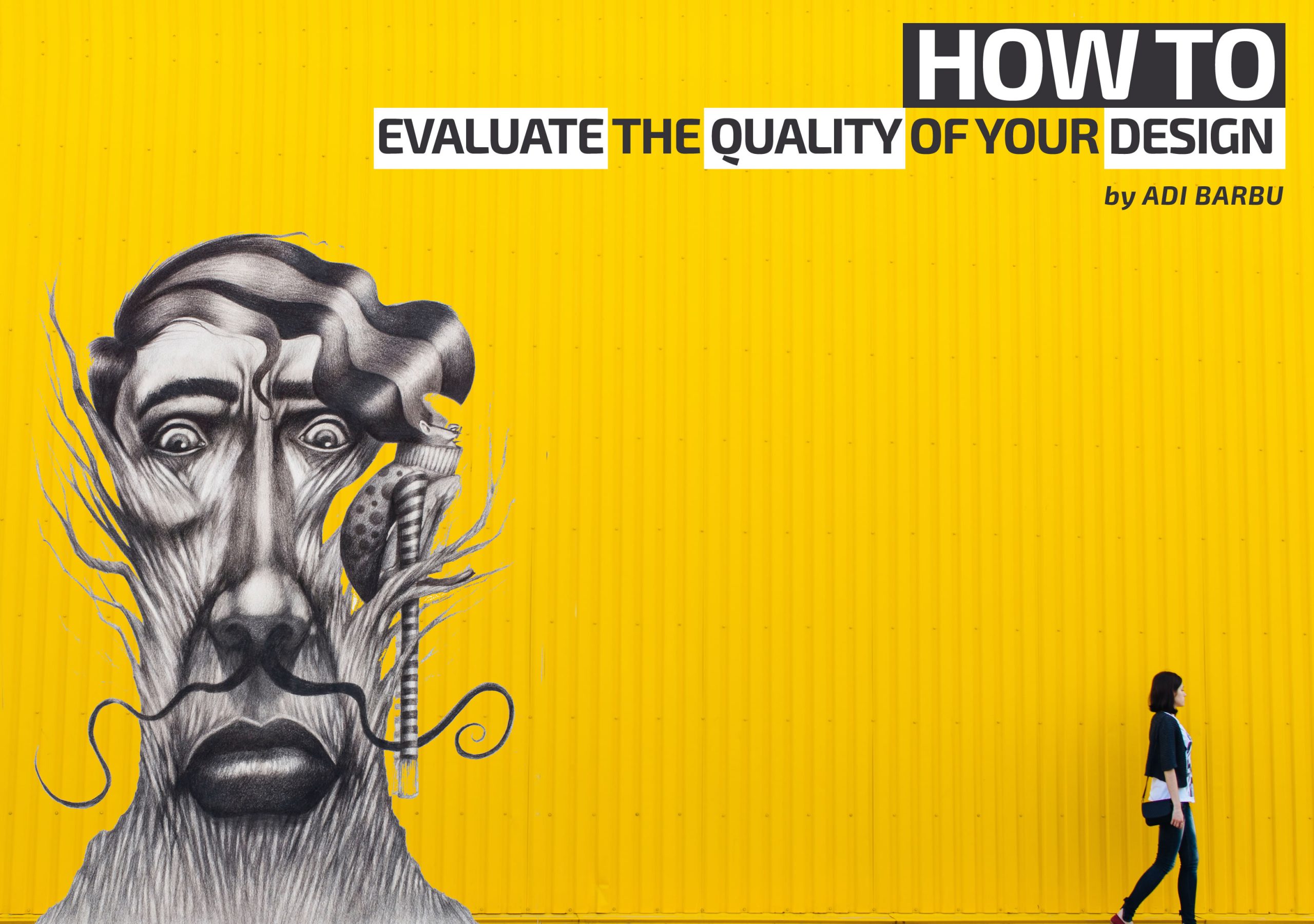
How to evaluate the quality of your design
Design is an ever-evolving field and it requires consistent effort and skill to stay ahead of the curve. As a designer, it is important to evaluate your work and understand the quality of your designs. This will help you to stay motivated and improve your skills. In this article, we will discuss how to evaluate the quality of your design and become a professional designer.
What is quality design?
Before you can evaluate the quality of your design, you need to understand what quality design is. Quality design is a combination of aesthetics, usability, and functionality. A good design should be visually appealing, easy to use, and should be able to fulfil the user’s needs. Quality design should also be consistent, well-structured, and organized. A quality design should also be able to communicate a message in a clear and concise manner.

Assessing your own design work
It can be difficult to evaluate your own design work objectively. However, it is important to take the time to assess your work so that you can identify areas for improvement. To assess your own design work, start by looking at the overall aesthetics and structure. Are the colors and font choices pleasing to the eye? Is the design well-structured and organized? Are there any inconsistencies in the design?
Next, look at the functionality of the design. Does the design work as expected? Are the buttons and links working correctly? Is the design easy to use? Finally, look at the usability of the design. Does the design feel intuitive and user-friendly? Are the instructions clear and concise? Does the design communicate the desired message effectively?
How to improve your design skills
If you want to improve your design skills, it is important to focus on the basics. Take the time to learn the fundamentals such as color theory, typography, and layout. Doing so will help you to develop a strong foundation for your designs. Additionally, it is important to stay up to date with the latest design trends and techniques. This will help you to stay ahead of the game and create designs that are relevant and effective.
It is also important to practice. Take the time to experiment with different concepts and techniques. This will help you to develop new skills and become more creative. Additionally, it is important to get feedback on your work. Getting feedback from experienced designers can help you to identify areas for improvement and gain valuable insight into the design process.
Tips for evaluating design quality
When evaluating the quality of your design, it is important to consider the following factors:
-
Aesthetics: Is the design visually pleasing?
-
Usability: Is the design easy to use?
-
Functionality: Does the design work as expected?
-
Consistency: Are there any inconsistencies in the design?
-
Structure: Is the design well-structured and organized?
-
Message: Does the design communicate the desired message effectively?
Additionally, it is important to keep in mind the target audience of the design. Are you designing for a specific demographic or user group? Taking the time to understand the target audience can help you to create designs that are tailored to their needs.
How to build a portfolio website
Having an online portfolio is essential for any designer looking to showcase their work and attract new clients. A portfolio website is a great way to showcase your skills and highlight your best work. Building a portfolio website is not as difficult as it may seem. There are a variety of tools and services available such as WordPress and Squarespace that make it easy to create a portfolio website. Additionally, there are a number of free portfolio website templates available online.
When creating a portfolio website, it is important to focus on the user experience. Make sure to include a clear navigation and easy-to-use search functionality. Additionally, make sure to include high-quality images and descriptions of your work. This will help potential clients to get a better understanding of your work and what you are capable of.
Best portfolio websites – Behance, Dribbble, GraphicsFamily
In addition to creating your own portfolio website, it is also important to showcase your work on other platforms. There are a number of platforms specifically designed for designers, such as Behance, Dribbble, and GraphicsFamily. These platforms are great for connecting with other designers and getting feedback on your work. Additionally, they are a great way to showcase your work and attract potential clients.
Professional design tips
When working on a design project, it is important to keep the following tips in mind:
-
Keep it simple: Make sure to keep your designs simple and focused on the core message.
-
Focus on the user: Make sure to design with the user in mind.
-
Test and iterate: Take the time to test your designs and iterate on them until they are perfect.
-
Pay attention to detail: Make sure to pay attention to the small details.
-
Stay organized: Make sure to keep your design files organized and backed up.
Strategies for getting feedback on design work
Getting feedback on your design work is essential for improving your skills. Here are a few strategies for getting feedback:
-
Ask for feedback from experienced designers: Reach out to experienced designers and ask for feedback on your work.
-
Participate in design challenges: Participate in design challenges and get feedback from the community.
-
Share your work on social media: Share your work on social media and ask for feedback from your followers.
-
Join design forums: Join design forums and ask for feedback from other designers.
-
Use online feedback tools: Use online feedback tools such as UsabilityTools to get feedback from users.
Becoming a professional designer
Becoming a professional designer requires dedication and hard work. You need to take the time to hone your skills and build a portfolio of quality work. Additionally, it is important to stay up to date with the latest trends and techniques. Staying connected with the design community and networking with other designers is also essential.
Conclusion
In conclusion, it is important to evaluate the quality of your design work in order to become a professional designer. To do so, you need to understand what quality design is and assess your own work objectively. Additionally, it is important to stay up to date with the latest trends and techniques, and build a portfolio of quality work. Finally, it is essential to get feedback on your work and make sure to stay connected with the design community.
Photo by islandworks on Pixabay

 Written by Adi Barbu
Written by Adi Barbu